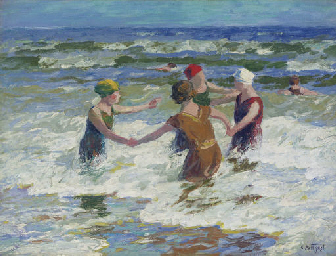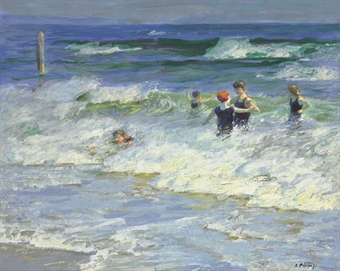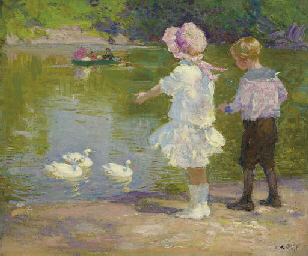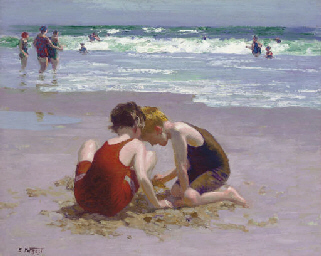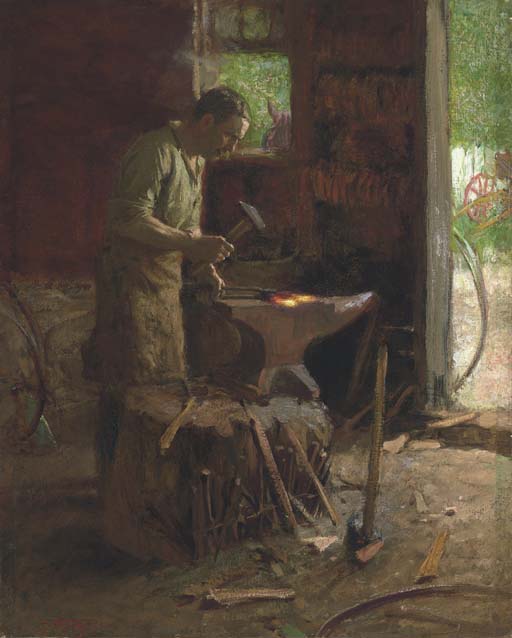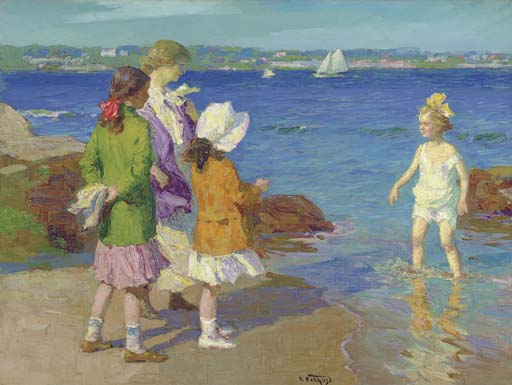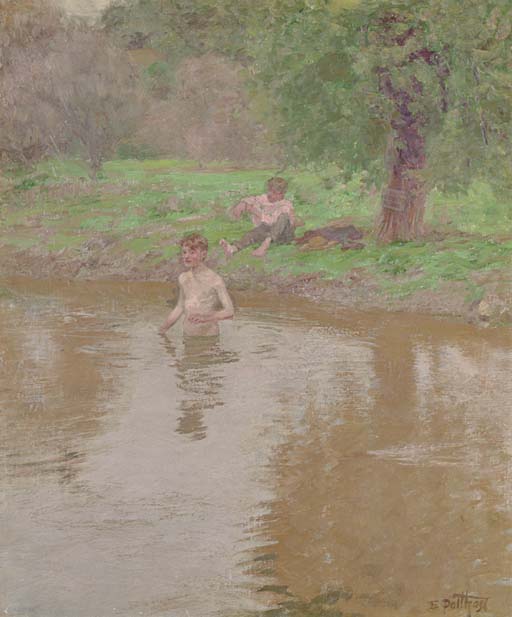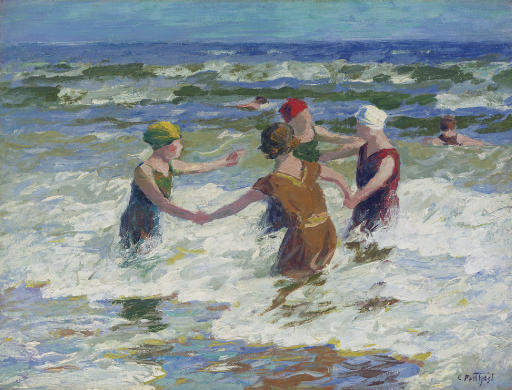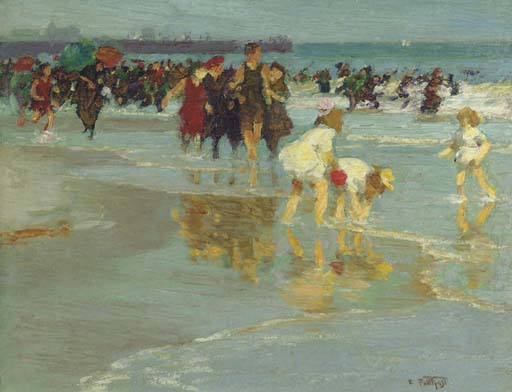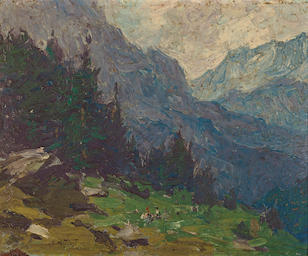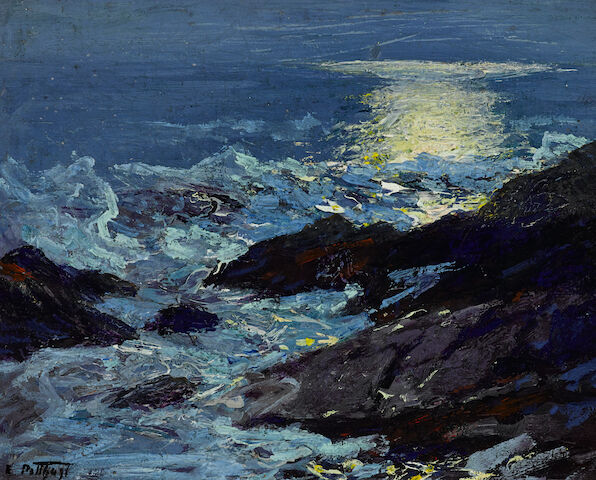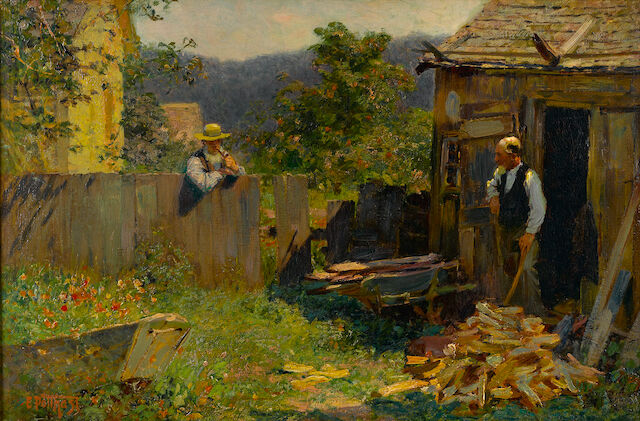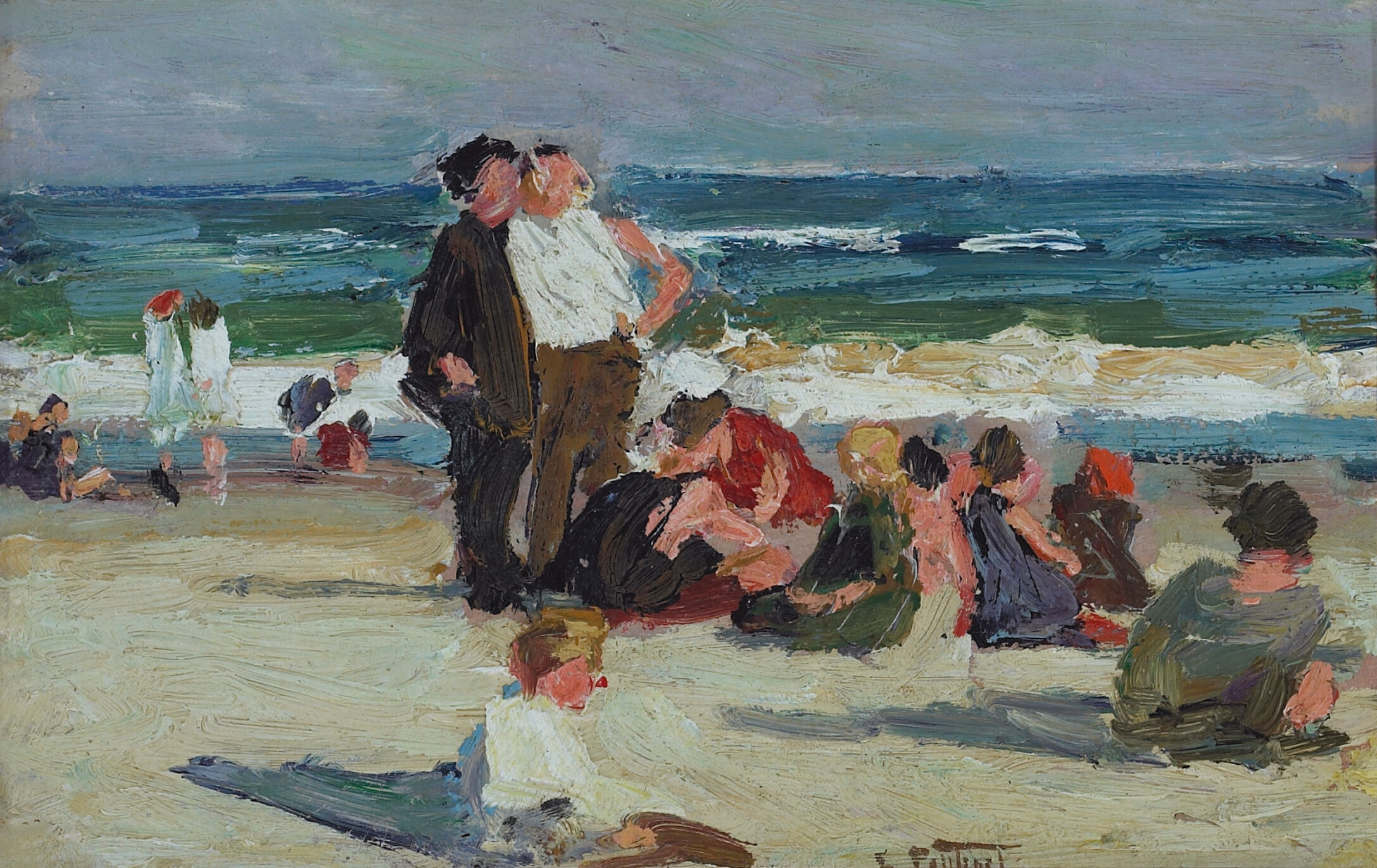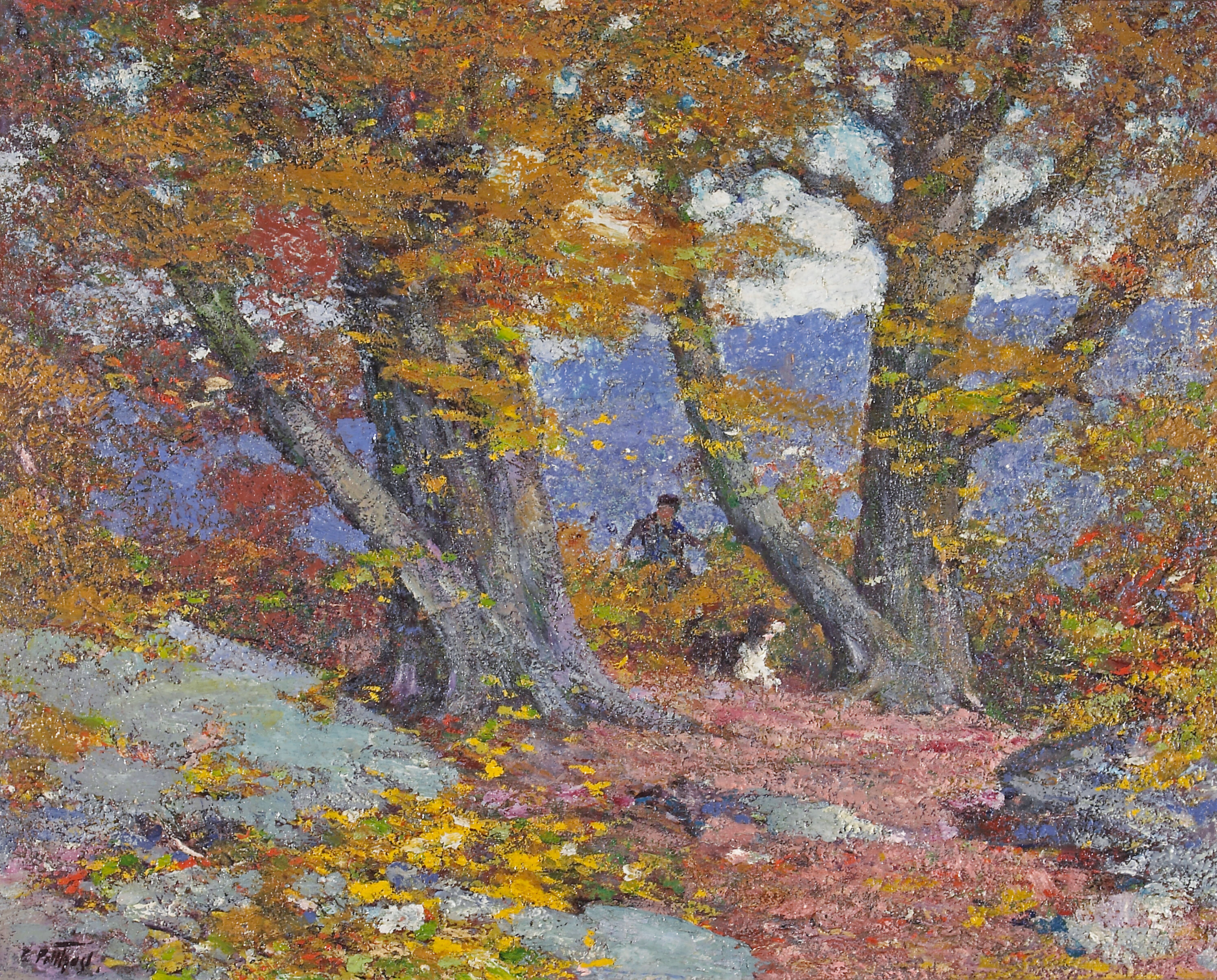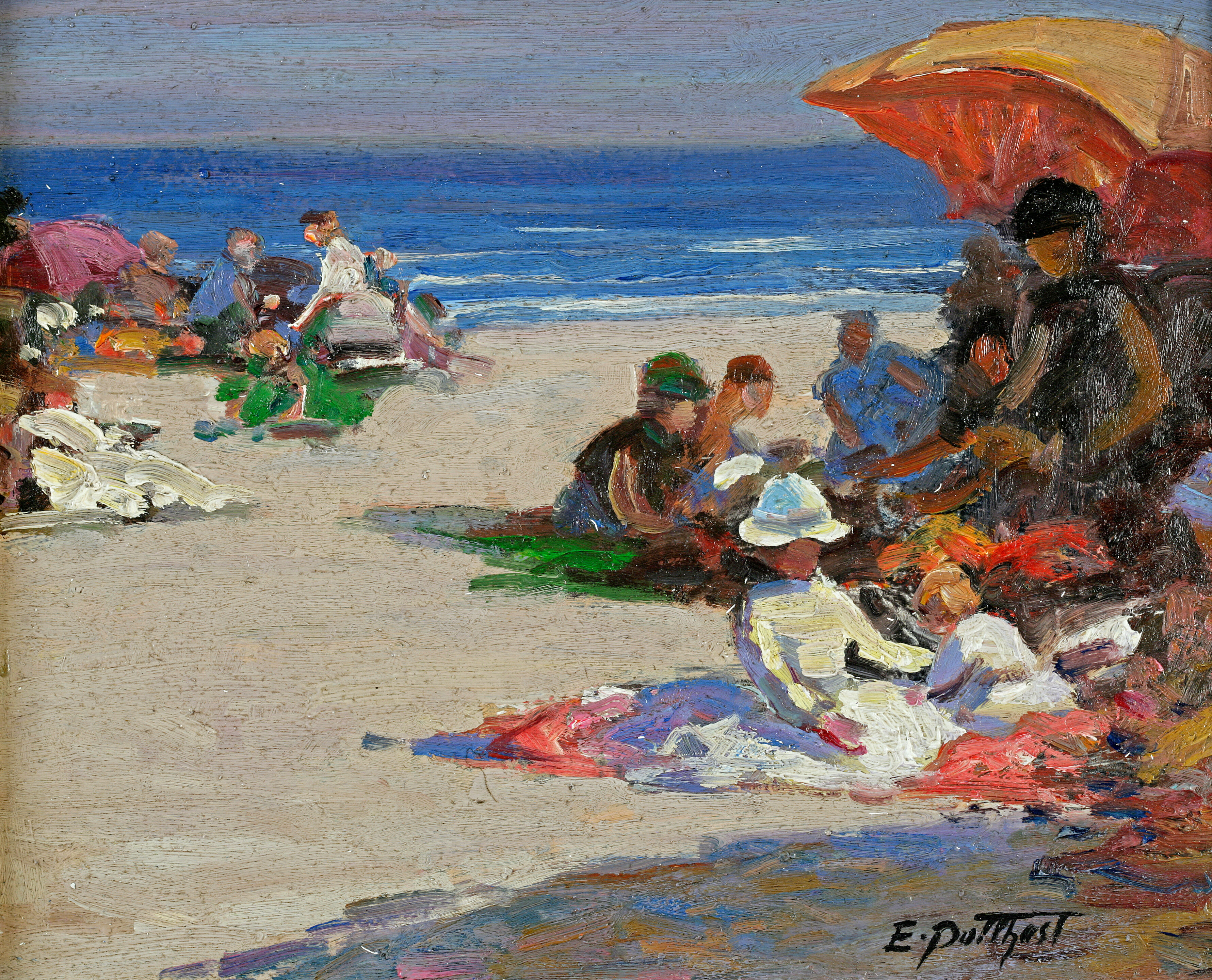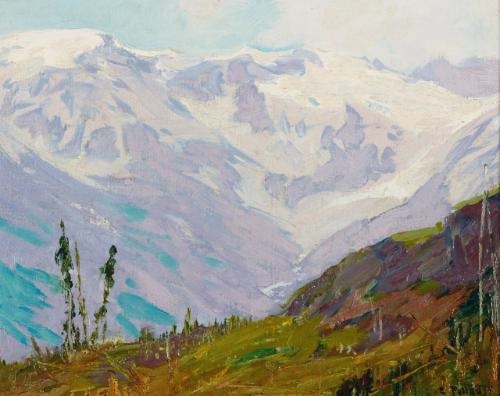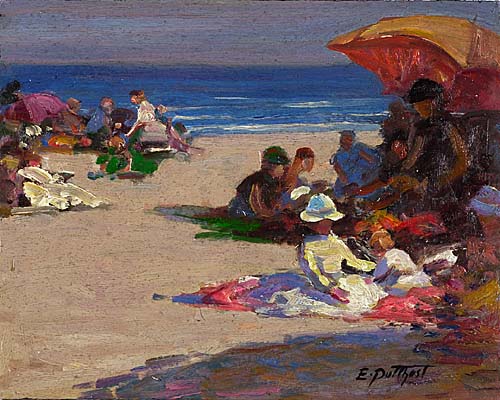Biography - Questroyal Fine Art, LLC, New York, New York
Edward Henry Potthast was born June 10, 1857, and was raised by his parents in Cincinnati, Ohio. His father’s occupation as a carpenter provided a solid artistic foundation for Edward. As a child, while helping with his father’s woodwork, nine-year-old Potthast learned the fundamental principles of form and design which he would continue to use later in his career.[His father considered Edward’s hopes of becoming a successful artist as fruitless, and his disapproval often reduced the young boy to hiding away, out of sight, where he would sketch copies of Winslow Homer’s illustrations by candlelight.
Potthast’s upbringing was marred by the Civil War and the effects it had on his family’s finances; when he was only sixteen, Potthast was forced to abandon his education, replacing school with a paying job that would help support his family.
Unable to let go of his artistic aspirations, Potthast balanced work with formal training. Around 1869, he began to work day shifts at Ehrgott Krebs Company as a lithographer, while intermittently attending night classes at McMicken School of Design.
In 1881, Potthast finally had enough money saved to purchase a ticket to Europe, where he spent a brief time in Antwerp, before traveling on to Munich. He enrolled at the Royal Academy in 1882, and soon after his works began to demonstrate a clear integration of the somber, dark tonalities typical of the Munich palette.
In 1885, Potthast returned to Cincinnati for a short time, where he resumed balancing his lithography work at Strobridge Lithographers, while taking night classes at the Cincinnati Art Academy.
The allure of working en plein air combined with the French countryside proved irresistible for Potthast, who began a two-year tour through Fontainebleau, Barbizon, and Gréz in 1885. Under the instruction of Robert W. Vonnoh, Potthast began to incorporate aspects of French Impressionism into his landscapes, playing with the ephemeral qualities of light and embracing brighter tonalities.
In the 1890s, Potthast returned to the United States, finally settling in New York City to work as an illustrator for Scribner’s and Century Magazine. Consequently, his work began to feature subjects of a more urban nature, which he rendered in a distinctly impressionist style. Potthast’s efforts to tie himself into the New York City art scene forged valuable connections and friendships which he would maintain well into his future. Several of Potthast’s early New York memberships included the Salmagundi Club, the New York Water Color Society, the Lotus Club, and Associate membership to the National Academy in 1899.
Just before the turn of the century, Potthast began to exhibit consistently at the National Academy and the Pennsylvania Academy of the Fine Arts. As he began to build a strong repertoire of landscape and marine paintings, the tight, academic feel of Potthast’s earlier works gave way to looser brushwork that captured a moment in time, infusing his canvases with an essence of spontaneity. In 1906 he was elected to full membership at the National Academy, and four years later, Potthast, along with four other prominent Academicians, was selected by the Santa Fe Railroad to travel west and record the natural beauty of the Grand Canyon.
Potthast was never married, and seemed complacent leading a fairly tranquil lifestyle. He favored the leisurely life of an artist, partaking in hobbies such as traveling, boating, and theater, all in the name of artistic inspiration. The works for which Edward Potthast is most remembered are his dynamic beach and coastal scenes. These vibrant paintings represent the culmination of years spent perfecting his skill of drawing and masterly control of color.[9] Potthast possessed an innate gift for capturing the lighthearted nature of beachgoers, and instilled a colorful vitality into the likes of children splashing in the ocean and gossiping women strolling along the beach.
Potthast’s dedication to his craft endured up until his final moments; in 1927, his body was discovered in his New York Studio, where he had passed away while working.
II. Chronology
1857 Born June 10, in Cincinnati, Ohio
1869 Enrolled in night classes at the McMicken School of Design for formal training
1881 Academic excursion to Europe; First destination was Antwerp, where he studied at the Académie Royale des Beaux Arts
1882–85 Moved on to Munich, enrolled in the Royal Academy
1885 Resumed work as a lithographer at the Strobridge Company, and enrolled in night classes at the Cincinnati Art Academy
1885–87 Traveled abroad to France, enrolled at the Académie Julian and Ecole des Beaux-Arts
1888 Went to Holland to study peasant life and encountered the work of Vincent Van Gogh
1889–92 Accepted a position as a painting instructor at the Cincinnati Art Academy and Cincinnati Art Club
1892 One-man exhibition held at Barton’s Art Store in Cincinnati, Ohio
1894 Worked as a magazine illustrator for Harper’s, Scribner’s, and Century
1895 Relocated to New York City to pursue painting
Joined the Salmagundi Club
Became director of the American Water Color Society
1899 Elected Associate member of the National Academy
1902 Elected to the Society of American Artists
1906 Elected as Academician of the National Academy
1910 Grand Canyon exploratory expedition with fellow National Academicians Thomas Moran, Elliott Daingerfield, Frederick Williams, and DeWitt Parshall
1927 Died in his New York studio on March 9
CHRISTIE'S 20I4
EDWARD HENRY POTTHAST (1857-1927)
DOWN IN THE GRAND CANYON
Christie's 2013
Christie's 2010
Christie's 2009
Christie's 2008
At the Beach
PRICE REALIZED
$1,161,000
Christie's 2007
Bonhams December 4, 2013
EDWARD HENRY POTTHAST
(American, 1857-1927)
Coast of Maine
8 x 10in
Sold for US$ 11,250 inc. premium
Bonhams Nov 28 2012
Edward Henry Potthast
Chopping wood
20 x 30in
US$ 25,000 - 35,000
Bonhams December 2, 2009
Edward Henry Potthast
Beach scene
5 1/4 x 8 1/4in
Sold for US$ 73,200 inc. premium
Bonhams May, 2008
Edward Henry Potthast (American, 1857-1927) A Hunter and His Dog among Autumn Trees
24 x 30in
Sold for US$ 30,000 inc. premium
Bonhams May, 2007
Edward Henry Potthast (American, 1857-1927) Beach Scene
8 x 10in
US$ 50,000 - 70,000
Bonhams April, 2006
Edward Potthast (1857-1927)
In the Woods
11 3/4 x 16in
Sold for US$ 35,850 inc. premium
Sotheby's October 3, 2013
EDWARD HENRY POTTHAST
TREES AT THE EDGE OF A CLEARING
LOT SOLD. 4,375
Sotheby's December 1, 2011
EDWARD HENRY POTTHAST
1857 - 1927
1857 - 1927
BOAT AT DOCK
LOT SOLD. 218,500
Sotheby's March 8, 2007
GATHERING SEAWEED
Swann 2002
- EDWARD HENRY POTTHAST At the Seashore.Estimate $40,000 - $60,000Price Realized (with Buyer's Premium) $71,800
Questroyal Fine Art, LLC, New York, New York
Edward Henry Potthast (1857–1927) The Water’s Fine Oil on canvas 30⅛ x 40⅛ inches Signed lower center: E Potthast
Edward Henry Potthast (1857–1927)
Rockbound Coast, Ogunquit
Oil on canvas
25 3/16 x 30⅛ inches
Signed lower left: E Potthast; on stretcher bar: A ROCK BOUND COAST / 25 X 30
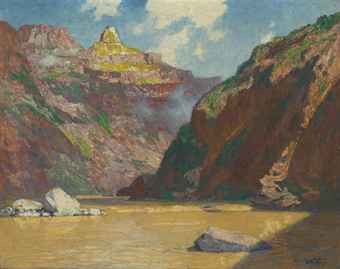
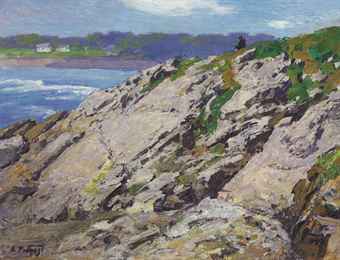
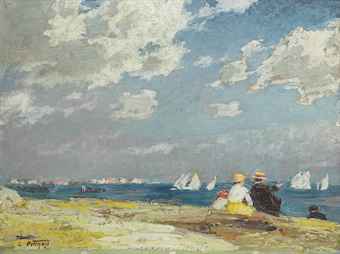
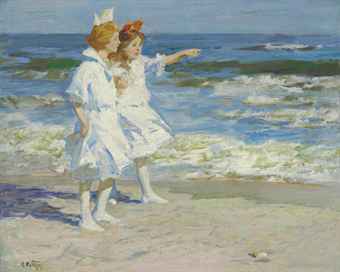
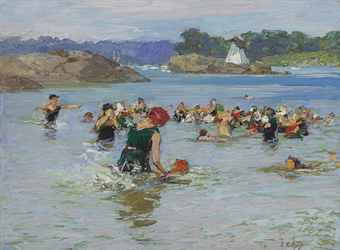
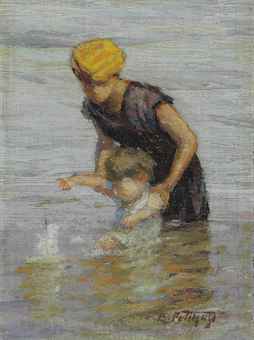
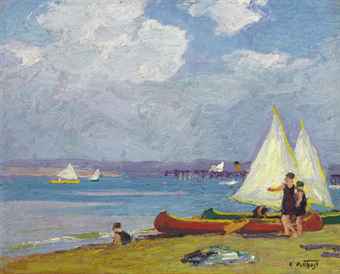
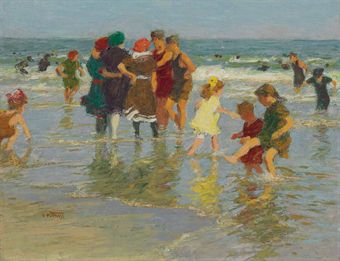
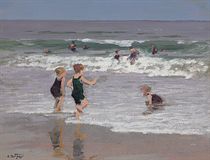


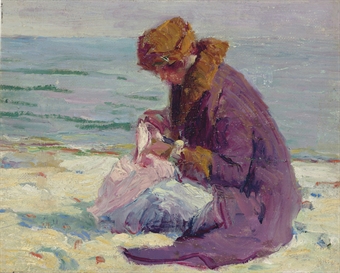
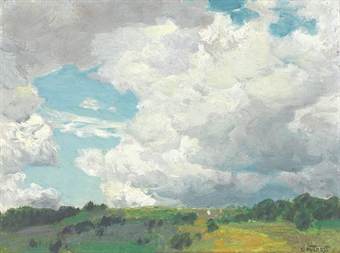
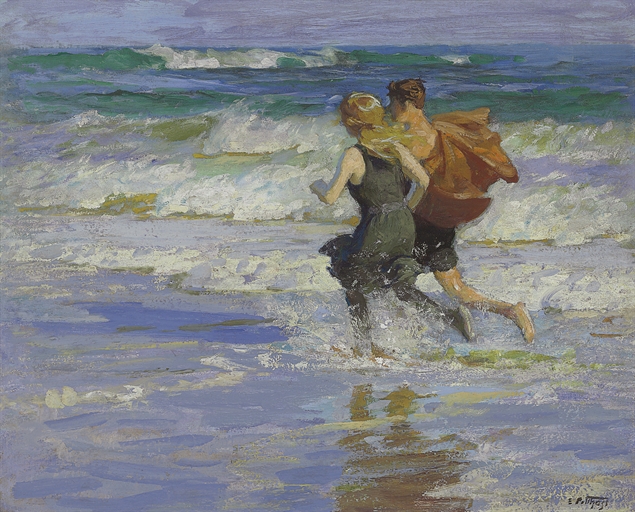
.jpg)
